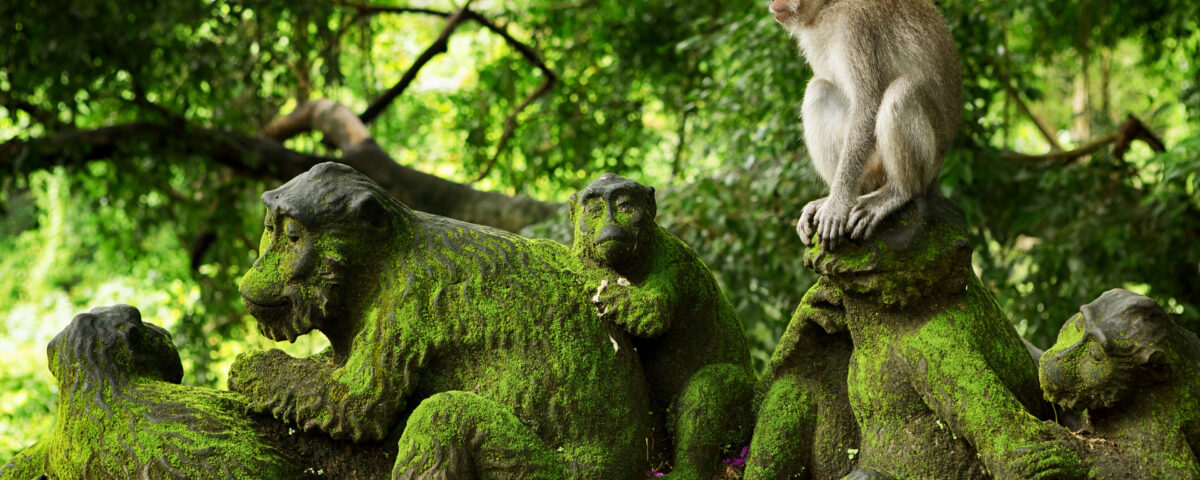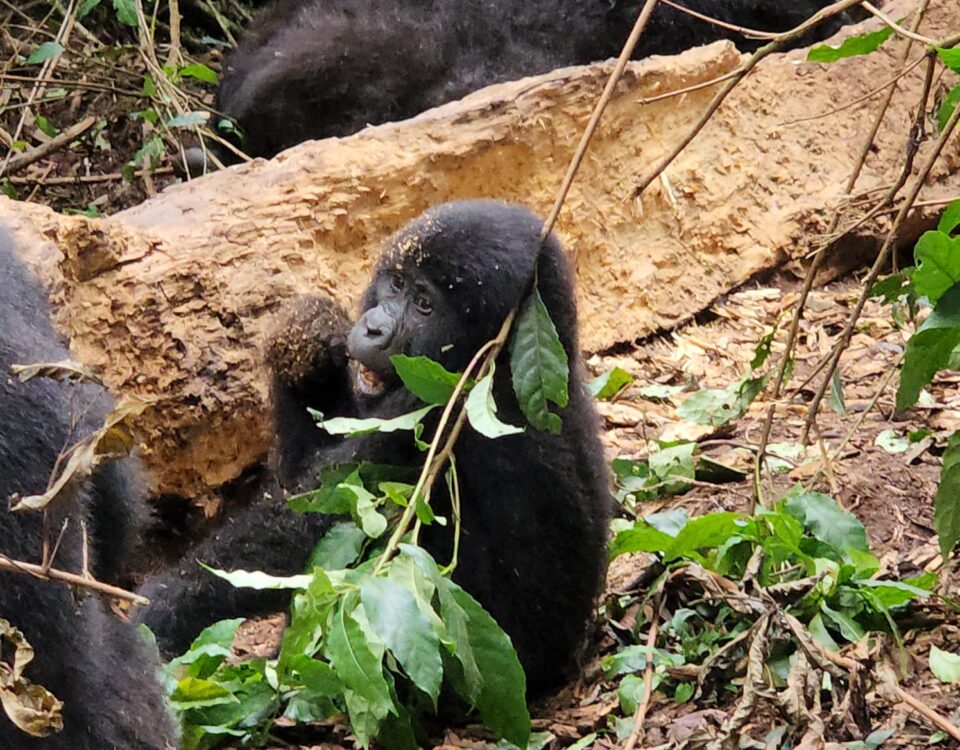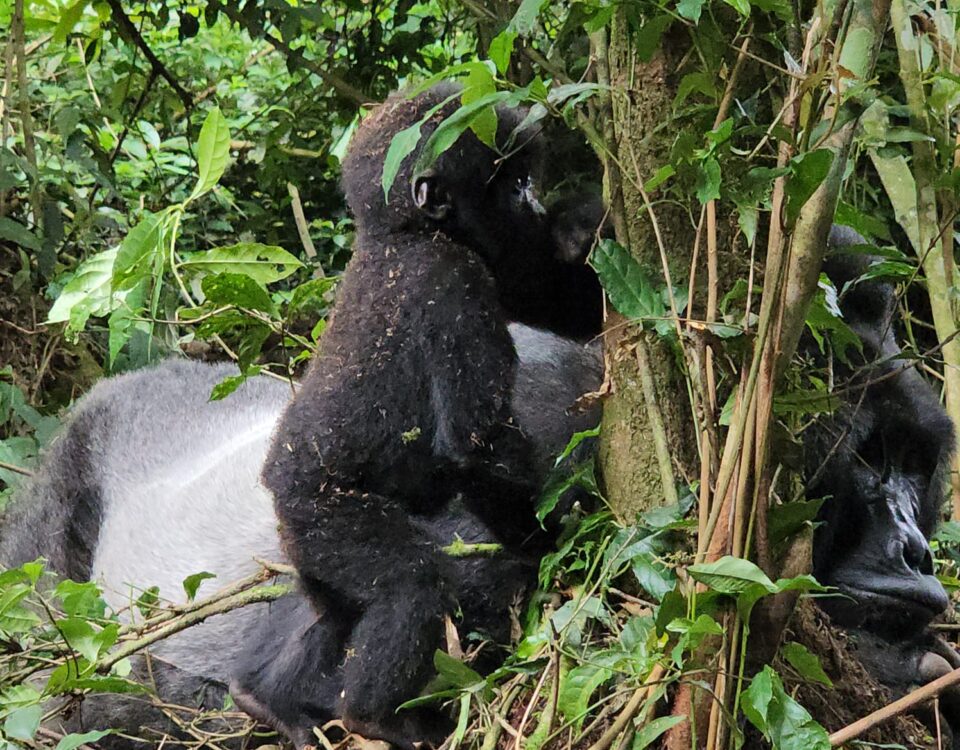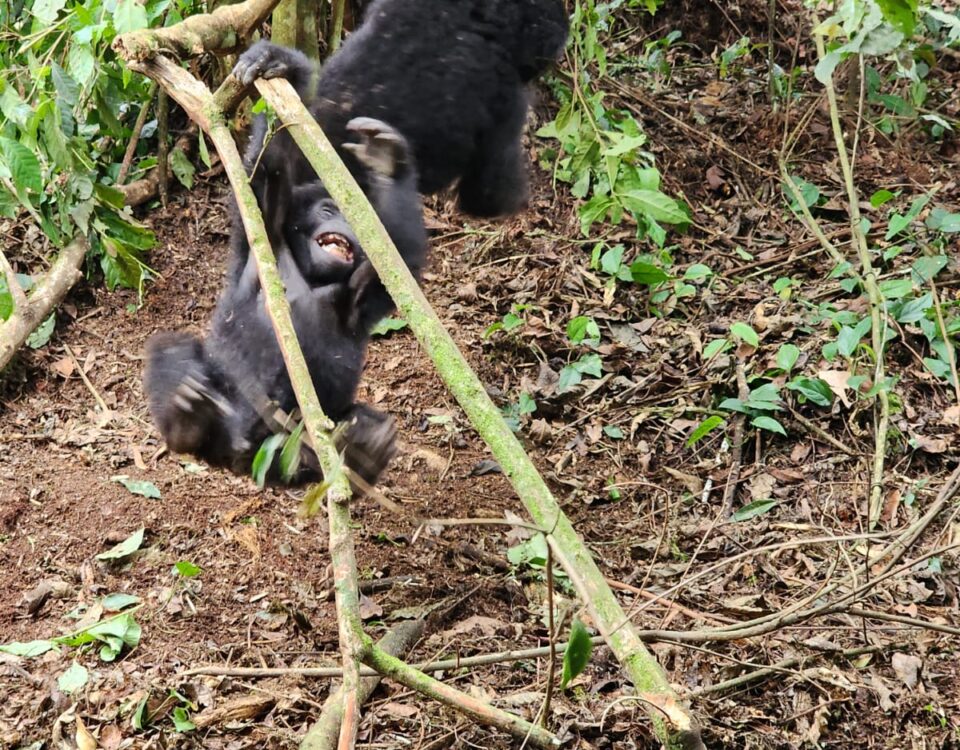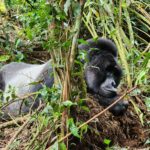
Can I Take Photos of the Gorillas During the Trek?
April 2, 2025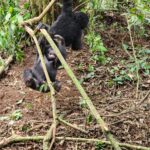
How Many Days Should I Spend in Rwanda for a Gorilla Trekking Experience?
April 2, 2025What is the Altitude of Volcanoes National Park for Trekking?
What is the Altitude of Volcanoes National Park for Trekking? Volcanoes National Park, located in the northwestern part of Rwanda, is one of the most famous national parks in Africa. It is renowned for being home to the endangered mountain gorillas, making it a must-visit destination for travelers interested in gorilla trekking. The park spans over 160 square kilometers (62 square miles) and is part of the Virunga Mountains, a range of dormant volcanoes that straddle the borders of Rwanda, Uganda, and the Democratic Republic of Congo (DRC).
Before embarking on your gorilla trekking adventure, it’s important to understand the terrain and environmental factors that can affect your trekking experience. One key element to consider is the altitude of Volcanoes National Park, which can significantly impact your physical preparation and trekking experience.
In this article, we will explore the altitude of Volcanoes National Park and how it affects trekkers. We’ll also provide helpful tips on how to prepare for trekking at high altitudes to ensure that you have a safe and enjoyable experience.
Best Uganda Rwanda Safari Packages
What is the Altitude of Volcanoes National Park?
Volcanoes National Park is situated at an altitude ranging from 2,400 meters (7,874 feet) to 4,507 meters (14,783 feet) above sea level. The park is nestled on the slopes of the Virunga Mountains, which consist of several dormant and extinct volcanoes, including Mount Karisimbi, Mount Bisoke, Mount Sabyinyo, Mount Gahinga, and Mount Muhabura. These volcanoes, particularly Mount Karisimbi, are the highest peaks in the park and contribute to the diverse ecosystems that make the park such a unique place for wildlife.
The varying altitudes across the park mean that some trekking routes are more demanding than others, depending on which volcano or gorilla family you are visiting. For instance, trekking to gorilla families that reside on the lower slopes of the volcanoes is generally less challenging in terms of altitude, while trekking to families in higher areas may require more stamina and adjustment to the altitude.
How Does the Altitude Affect the Trekking Experience?
Trekking at high altitudes can have both positive and negative effects on the body. While the altitude of Volcanoes National Park might not seem as extreme as some of the world’s highest trekking destinations, it is still important to recognize the challenges that come with the altitude.
- Physical Exertion and Difficulty
At an altitude of 2,400 to 4,507 meters (7,874 to 14,783 feet), trekkers may experience a range of physical challenges. The higher you go, the less oxygen is available, making it harder for your body to perform strenuous activities. Trekking in Volcanoes National Park involves navigating steep terrain, dense forests, and uneven trails, all of which can be physically demanding. Even experienced trekkers may find it more difficult to breathe and maintain energy levels at these altitudes.
The air pressure is lower at higher altitudes, which means there is less oxygen to supply your muscles and brain. As a result, you may experience fatigue more quickly, which can make the trek feel more challenging than expected. It’s crucial to pace yourself during the trek, take regular breaks, and stay hydrated.
- Risk of Altitude Sickness
Altitude sickness, also known as acute mountain sickness (AMS), can occur when ascending to altitudes of 2,500 meters (8,200 feet) or higher. Symptoms of AMS include headaches, dizziness, nausea, fatigue, and shortness of breath. Although altitude sickness is less common at the altitudes in Volcanoes National Park, it is still possible for some trekkers to experience mild symptoms, especially if they are not accustomed to high-altitude conditions.
To reduce the risk of altitude sickness, it is essential to take time to acclimatize before embarking on your trek. This is why trekking permits are carefully regulated, and trekkers are advised to spend a day or two in the area before starting the trek. This allows your body to adjust to the thinner air and reduces the chances of AMS.
- Beneficial Health Effects of Trekking at High Altitude
While trekking at high altitudes can be challenging, it also offers some health benefits. Regular exposure to high-altitude environments can improve cardiovascular health and stamina, as the body must work harder to get oxygen to the muscles. Many trekkers report feeling fitter and more energized after completing high-altitude treks.
Additionally, trekking in the cool, fresh mountain air is a natural way to combat stress and anxiety. Being surrounded by the lush, green landscapes of Volcanoes National Park, with its breathtaking views of the Virunga Mountains, is a calming experience that enhances mental well-being.
How to Prepare for Trekking at High Altitude
Given the altitude of Volcanoes National Park and the challenges that come with trekking at high altitudes, it’s important to properly prepare for your adventure. Here are some essential tips to help you prepare for the trek:
- Physical Fitness
To ensure that you can handle the physical demands of trekking at high altitudes, it is recommended to engage in regular cardiovascular exercises leading up to your trip. Focus on activities such as hiking, running, swimming, or cycling to build endurance and stamina. Incorporating uphill walking and stair climbing into your routine can also help you prepare for the steep slopes you’ll encounter in the park.
If you are not used to hiking at high altitudes, consider taking shorter hikes in your area or visiting lower-altitude destinations to help your body acclimatize.
- Acclimatization
As previously mentioned, acclimatization is crucial to prevent altitude sickness. The best way to acclimatize is to spend a day or two in Rwanda’s highlands before embarking on your trek. Staying in nearby areas like Ruhengeri or Musanze allows you to get used to the altitude gradually. While you’re acclimatizing, consider doing some light activities such as visiting local attractions or taking a short nature walk.
- Proper Hydration and Nutrition
Staying hydrated is essential when trekking at high altitudes. Dehydration can worsen symptoms of altitude sickness and make the trek more difficult. Be sure to drink plenty of water before and during your trek. Avoid alcohol and caffeine, as they can dehydrate the body.
In addition to staying hydrated, it is important to maintain proper nutrition. Eating well-balanced meals that include carbohydrates, proteins, and healthy fats will give you the energy you need for the trek. Snacks like energy bars, nuts, and fruits are great for keeping your energy levels up during breaks.
- Wear the Right Gear
Proper footwear is essential for navigating the rocky, muddy, and steep trails in Volcanoes National Park. Be sure to wear sturdy hiking boots with good grip and ankle support. Additionally, wear moisture-wicking clothes to keep you dry and comfortable. Dress in layers so that you can adjust to changes in temperature during the trek, as it can be chilly in the mornings and evenings, but warm up during the day.
Conclusion: Embrace the Altitude and the Adventure
The altitude of Volcanoes National Park is a key factor to consider when planning your gorilla trekking adventure in Rwanda. The park’s varying altitudes provide a diverse landscape and create a unique experience for trekkers, but they also present certain challenges, such as reduced oxygen levels and the risk of altitude sickness.
By understanding the altitude of the park and preparing physically for the trek, you can ensure that your experience is both enjoyable and safe. Acclimatizing to the altitude, staying hydrated, and maintaining a steady pace will help you overcome the challenges of high-altitude trekking and allow you to focus on the incredible experience of encountering mountain gorillas in their natural habitat.
Remember, the altitude is part of what makes your adventure in Volcanoes National Park so special. The breathtaking views, the lush landscapes, and the awe-inspiring gorillas are all enhanced by the mountain atmosphere. So, embrace the altitude, prepare well, and get ready for a trek you will never forget!

